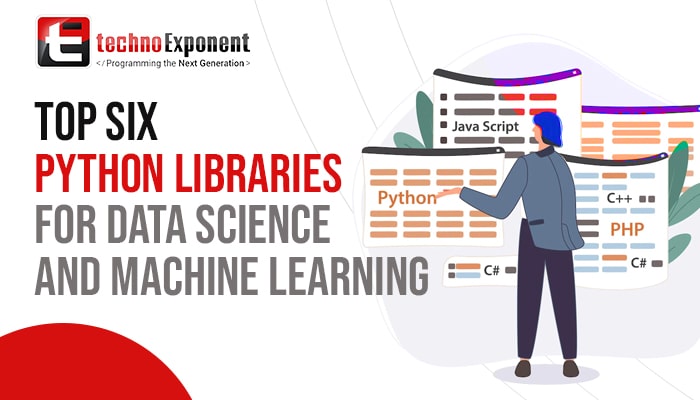
Among all programming languages, Python is the most popular and widely used. When individuals think to solve data science challenges and tasks, Python never fails to surprise them. Hiring Python developers is beneficial for you if you are looking to work with data science tasks in your organization.
Moreover, data scientists are leveraging the power of Python programming each passing day. Python is easy to debug, learn, open-source, object-oriented, and widely used. Data science libraries help developers solve everyday problems.
In this blog, we will introduce you to the closely related fields of machine learning and data science with the active roles of Python developers. You will explore Python’s dominance in these fields and yet you will get to know different Python libraries for working in them.
Different Python libraries
The top five Python libraries described below are not only a few. But other libraries deserve to be looked at. As a next step if you are interested in implementing the core function of python then you must hire a Python developer.
- Tensor Flow
Tensor Flow is developed by Google’s brain team. It is an open-source library that is used for deep learning applications. The very first it was released in the year 2015 and the Google brain team launched it with the latest version with more features. However, Pencil flow supports Python 3.9.
Originally, it was developed with numerical compilations and it also offers a flexible and comprehensive ecosystem of the community library, resources, and tools that enables the developers to build and deploy ML-based applications.
Features
- Image and speech recognition
- Video detection
- Time series analysis
- Text-based applications
- Reduce ER by 60% in neural machine learning.
- Seamless library management.
- SciPY
Scientific Python is an open-source library of python which is extensively used for high-level competitions. Python application developers love to work with SciPY through linear algebra, solve differential equations by optimizing algorithms, and work with multi-dimensional image operations.
Features
- High-level commands for visualization and data manipulation.
- Multidimensional image processing.
- Collection of functions and algorithm built on Numpy extension of Python.
- Pandas
Pandas have been developed by Wes Mc Kinney. It uses data manipulations and analysis to provide expressive flexible and fast data structures with features such as fancy indexing, missing data, and data alignment.
Pandas provide an expressive flexible and fast data structure that helps the developer with relational and labeled data. Pandas are based on two main structures called Frames and series.
It is an open-source Python library that provides high performance and easy-to-use data structure with analysis. This is the reason python application developer uses the Panda library when engaged in data science-related work.
Features
- Contain manipulation and high-level data Structure tools.
- Enables to create your function across a series of data
- Rich functionalities and eloquent syntax give freedom to deal with missing data.
- Keras
Again, Keras is also an open-source library. It provides an interface for the tensor flow library and also enables fast experimentation with neural networks. Keras was developed by Francois Chollet and was released in the year 2015.
It is a high-level API and uses to implement neural networks easily.
Features
- It provides vast pre-label data sets which are used directly to load and import.
- It contains different parameters and layers that are used for configuration construction evaluation and training.
- Matplotlib
Matplotlib has powerful visualizations. It is a plotting library for python with approximately 26,000 comments on GitHub. According to the data visualization, it provides an object-oriented API. These APIs are later used to embed into plots.
Features
- It is usable as a MATLAB replacement with the advantage of being an open and free source.
- It visualizes the distribution of data and gains instant insights.
Is Django useful in Data Science?
Django is a web framework that is not used in core data science. But Django is a collection of apps used for integrating statistical models in your project. You can implement machine learning conveniently and integrates different engine and libraries with a set of tools through which you can leverage the generated data into your project.
Hire Django developers if you are looking forward to introducing the data science framework conveniently in your project.
Python Django developers are the one who is expert in both. Both Python and Django are useful in machine learning. They just play different roles but target the same goal.
Today, you learned a brief overview of python in machine learning and data science. The lens of Python and its top libraries play a major role in data science. Hopefully, this discussion has piqued your interest, and considered learning more. There are many libraries like Beautiful Soup, Scrapy, and Bokeh used for data visualization.
 +44 141 628 8980
+44 141 628 8980
 (786) 269-2247
(786) 269-2247
 +61 872007153
+61 872007153
 +91 8900027268 (Sales only)
+91 8900027268 (Sales only)








